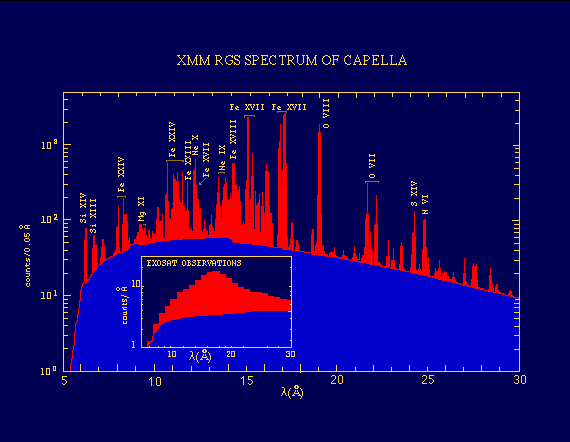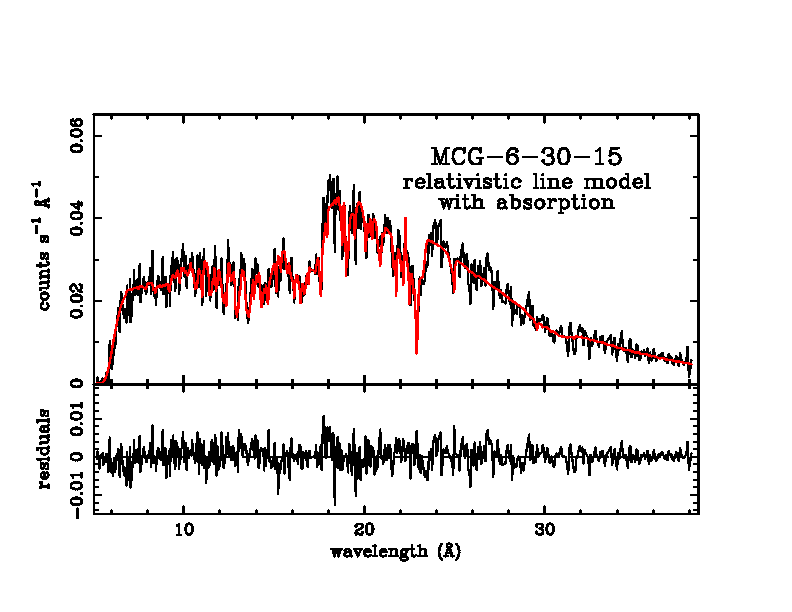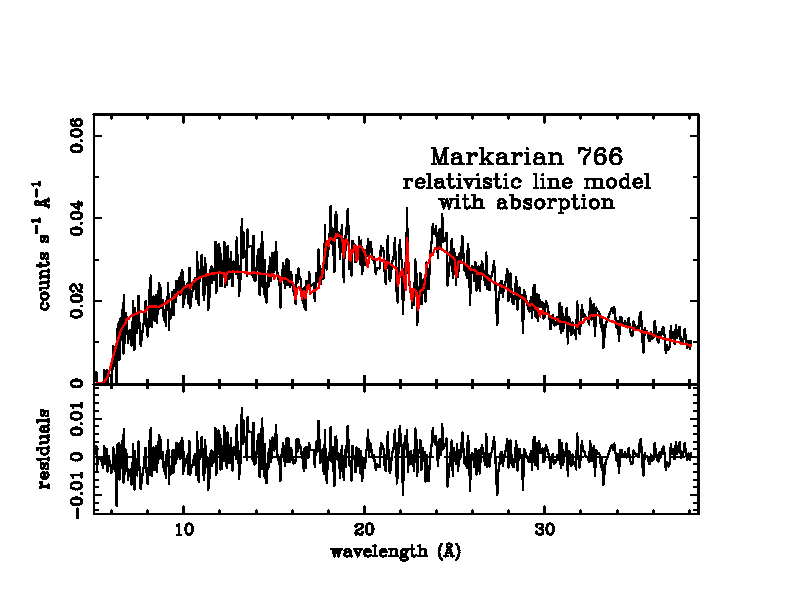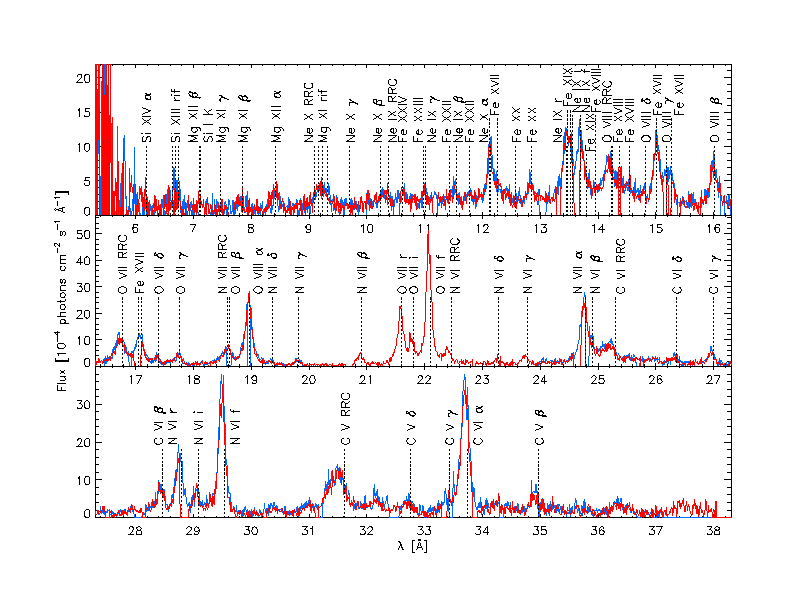
High resolution spectroscopy in the X-ray band has proven to be an invaluable diagnostic tool in detailed investigations of the dynamics and physical structure of X-ray sources, investigations which until recently could only be carried out on the closest of these sources, the Sun. X-ray spectroscopy has the potential for determining many of the fundamental properties of cosmic sources of high energy radiation, such as stellar coronae, X-ray binaries, supernova remnants, active galaxies and clusters. Our knowledge and understanding of the physical processes leading to emission and absorption features in the X-ray spectra of astrophysical sources is also under review, in light of the novel results provided by the current generation of X-ray spectrometers.
The improvement in throughput and spectral resolution offered by the RGS on XMM-Newton means that it is now possible to obtain detailed knowledge of the temperature and chemical composition of sources which were only at the limit of detection with previous generations of X-ray instruments. Gas temperatures and densities, ionisation states, elemental abundances, mass motions and redshifts are routinely measured by the RGS in a variety of cosmic sources, in our Galaxy and far beyond.
Below are only a handful of the many spectacular spectra provided by the XMM-Newton RGS during its first two years of operations.
The picture below illustrates the remarkable increase in sensitivity and resolution afforded by the RGS by comparing the predicted RGS spectrum of the star Capella with that obtained with the EXOSAT gratings (inset). The throughput is three orders of magnitude, and the spectral resolution more than a factor of 20, better than achieved with EXOSAT.

... and this is the observed RGS spectrum of Capella (from Audard et al. A&A, 365, L329, 2001) with its wealth of emission lines.

These two images make a direct comparison of the RGS spectra of the Narrow Line Seyfert 1 galaxies MCG -6-30-15 and Mrk 766: the best fit model comprises a power law and relativistic emission lines from O, N and C, seen through a warm absorber (Branduardi-Raymont et al. A&A, 365, L140, 2001; Sako et al. Ap. J., submitted, 2002).


The RGS spectrum of the prototypical Seyfert 2 galaxy NGC 1068, which has been studied in great detail by Kinkhabwala et al. (Ap. J., in press, 2002).
